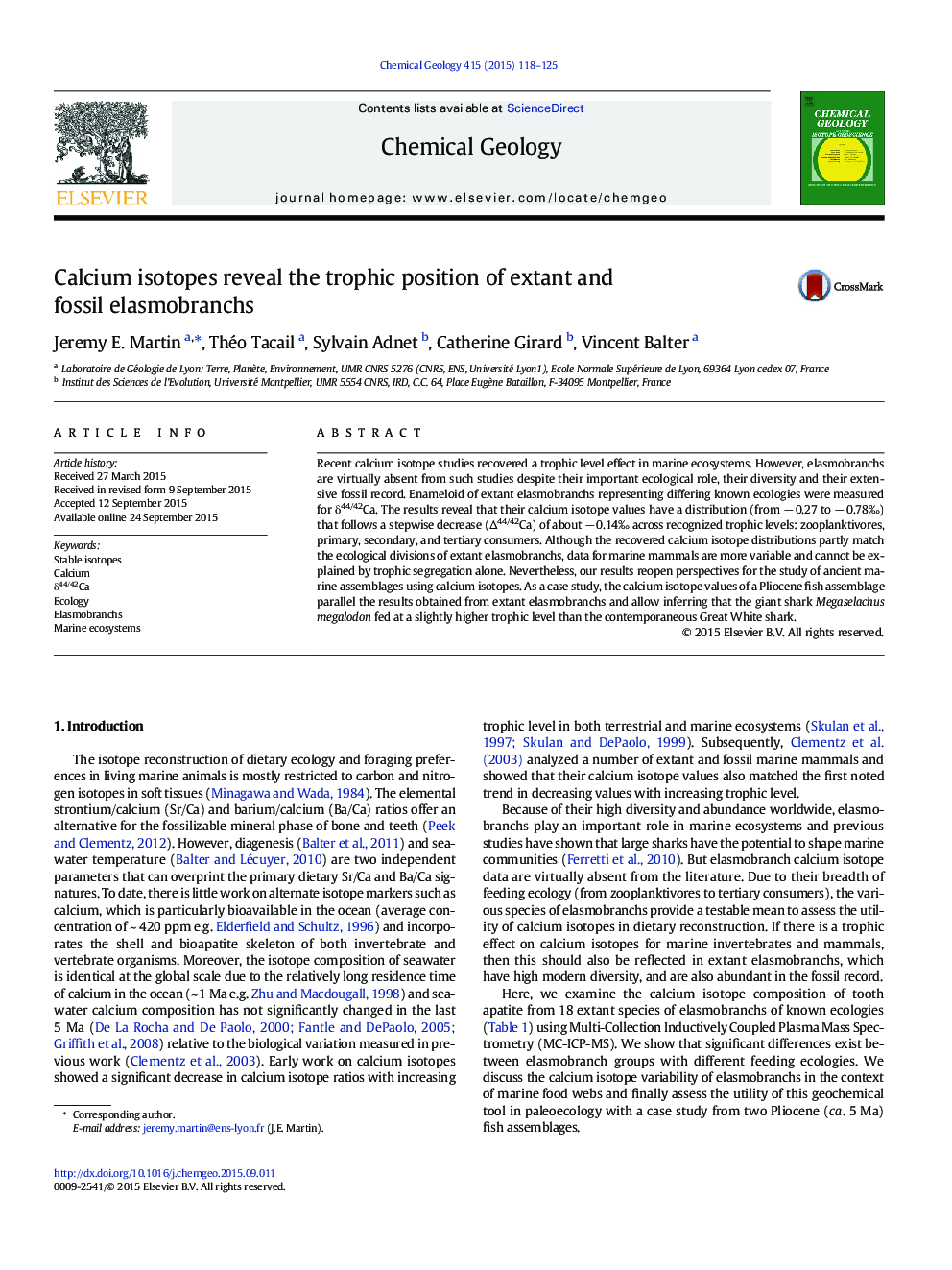| Article ID | Journal | Published Year | Pages | File Type |
|---|---|---|---|---|
| 6436229 | Chemical Geology | 2015 | 8 Pages |
â¢We measured calcium isotope ratios in modern elasmobranch teeth.â¢We record a stepwise decrease in δ44/42Ca from primary to tertiary elasmobranch consumers.â¢Implications for the cycling of calcium in marine food webs are discussed.â¢Paleoecological inferences in a Pliocene fish assemblage are possible using calcium isotope ratios.
Recent calcium isotope studies recovered a trophic level effect in marine ecosystems. However, elasmobranchs are virtually absent from such studies despite their important ecological role, their diversity and their extensive fossil record. Enameloid of extant elasmobranchs representing differing known ecologies were measured for δ44/42Ca. The results reveal that their calcium isotope values have a distribution (from â 0.27 to â 0.78â°) that follows a stepwise decrease (â44/42Ca) of about â 0.14â° across recognized trophic levels: zooplanktivores, primary, secondary, and tertiary consumers. Although the recovered calcium isotope distributions partly match the ecological divisions of extant elasmobranchs, data for marine mammals are more variable and cannot be explained by trophic segregation alone. Nevertheless, our results reopen perspectives for the study of ancient marine assemblages using calcium isotopes. As a case study, the calcium isotope values of a Pliocene fish assemblage parallel the results obtained from extant elasmobranchs and allow inferring that the giant shark Megaselachus megalodon fed at a slightly higher trophic level than the contemporaneous Great White shark.
